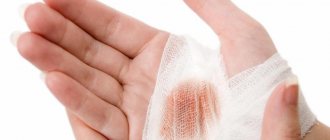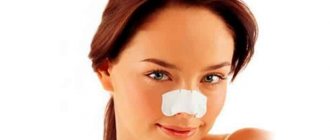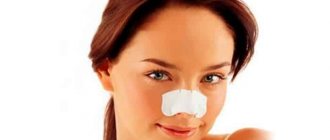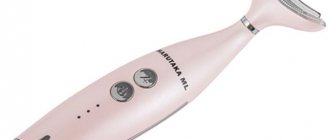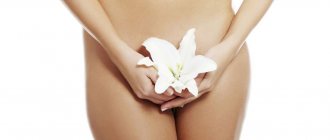Skin functions
The main purpose of leather is, of course, protection from external environmental influences. But our skin is multifunctional and complex and takes part in a number of biological processes occurring in the body.
Main functions of the skin:
- mechanical protection - the skin prevents soft tissues from mechanical stress, radiation, microbes and bacteria, and the entry of foreign bodies into the tissues.
- ultraviolet protection - under the influence of sun treatment, melanin is formed in the skin as a protective reaction to external adverse effects (during prolonged exposure to the sun). Melanin causes the skin to become temporarily darker in color. A temporary increase in the amount of melanin in the skin increases its ability to block ultraviolet radiation (retains more than 90% of radiation) and helps neutralize free radicals formed in the skin when exposed to the sun (acts as an antioxidant).
- thermoregulation - is involved in the process of maintaining a constant temperature of the whole body, due to the work of the sweat glands and the thermal insulating properties of the hypodermis layer, consisting mainly of adipose tissue.
- tactile sensations - due to nerve endings and various receptors located close to the surface of the skin, a person feels the influence of the external environment in the form of tactile sensations (touch), and also perceives temperature changes.
- maintaining water balance - through the skin; if necessary, the body can secrete up to 3 liters of fluid per day through the sweat glands.
- metabolic processes - through the skin, the body partially removes by-products of its vital activity (urea, acetone, bile pigments, salts, toxic substances, ammonia, etc.). The body is also capable of absorbing some biological elements from the environment (microelements, vitamins, etc.), including oxygen (2% of the body’s total gas exchange).
- synthesis of vitamin D - under the influence of ultraviolet radiation (sun), vitamin D is synthesized in the inner layers of the skin, which is subsequently absorbed by the body for its needs.
Methods for diagnosing skin diseases
If you find any pathologies on the skin, you should not start self-medication; first, you should visit a doctor. He will prescribe a series of studies to determine the disease, and, based on this, will prescribe treatment.
Tests that will need to be taken to determine the type of pathology:
- General blood analysis;
- Blood chemistry;
- Scraping from the affected area;
- Biopsy (if necessary);
- Allergen test;
- STD test;
- Ultrasound of internal organs.
Note! Most skin diseases cannot be completely cured, but by following basic hygiene rules and other general recommendations, you can maintain them during the sleep stage.
Epidermis
The epidermis is the outer layer of skin, formed mainly from the protein keratin and consisting of five layers:
- horny - the uppermost layer, consists of several layers of keratinized epithelial cells called corneocytes (horny plates), which contain the insoluble protein keratin
- shiny - consists of 3-4 rows of cells, elongated in shape, with an irregular geometric contour, containing eleidin, from which keratin is subsequently formed
- granular - consists of 2-3 rows of cylindrical or cubic cells, and closer to the surface of the skin - diamond-shaped
- spinous - consists of 3-6 rows of spinous keratinocytes, polygonal in shape
- basal - the lowest layer of the epidermis, consists of 1 row of cells called basal keratinocytes and having a cylindrical shape.
The epidermis does not contain blood vessels, so the supply of nutrients from the inner layers of the skin to the epidermis occurs due to diffusion (penetration of one substance into another) of tissue (intercellular) fluid from the dermis layer to the layers of the epidermis.
Intercellular fluid is a mixture of lymph and blood plasma. It fills the space between cells. Tissue fluid enters the intercellular space from the terminal loops of blood capillaries. There is a constant exchange of substances between tissue fluid and the circulatory system. Blood delivers nutrients to the intercellular space and removes cell waste products through the lymphatic system.
The thickness of the epidermis is approximately 0.07 - 0.12 mm, which is equal to the thickness of a simple sheet of paper.
In some areas of the body, the thickness of the epidermis is slightly thicker and can be up to 2 mm. The most developed stratum corneum is on the palms and soles, much thinner on the abdomen, flexor surfaces of the arms and legs, sides, eyelid skin and genitals.
Skin acidity pH is 3.8-5.6.
How do human skin cells grow?
In the basal layer of the epidermis, cell division occurs, their growth and subsequent movement to the outer stratum corneum. As the cell matures and approaches the stratum corneum, the protein keratin accumulates in it. Cells lose their nucleus and major organelles, turning into a “sac” filled with keratin. As a result, the cells die and form the uppermost layer of skin from keratinized scales. These scales shed over time from the surface of the skin and are replaced by new cells.
The entire process from the birth of a cell to its exfoliation from the surface of the skin takes an average of 2-4 weeks.
Skin permeability
The scales that make up the uppermost layer of the epidermis are called corneocytes. The scales of the stratum corneum (corneocytes) are connected to each other by lipids consisting of ceramides and phospholipids. Due to the lipid layer, the stratum corneum is practically impermeable to aqueous solutions, but solutions based on fat-soluble substances are able to penetrate through it.
Color of the skin
Inside the basal layer are melanocyte cells that secrete melanin, a substance that determines skin color. Melanin is formed from tyrosine in the presence of copper ions and vitamin C, under the control of hormones secreted by the pituitary gland. The more melanin contained in one cell, the darker the color of a person's skin. The higher the melanin content in the cell, the better the skin protects from exposure to ultraviolet radiation.
With intense exposure to ultraviolet radiation on the skin, the production of melanin in the skin sharply increases, which provides the skin with a tan.
The effect of cosmetics on the skin
All cosmetics and procedures intended for skin care mainly affect only the top layer of skin - the epidermis.
Skin aging as a mechanical phenomenon: the main “weak links” of aging skin
I. Kruglikov, Doctor of Physical and Mathematical Sciences, Wellcomet GmbH, Karlsruhe, Germany The article is published with the kind permission of the journal Kosmetische Medizin (Germany) AESTHETIC MEDICINE VOLUME XVII • No. 4 • 2018
1. INTRODUCTION
Changes in aging skin are varied and affect almost all its layers. Age-related differences have been found in the stratum corneum, other layers of the epidermis, dermis, and even subcutaneous fat [1]. Finding out the reasons for the changes found has led to the emergence of various anti-aging strategies. Examples include the theory of superoxide radicals (due to which antioxidants have become widely used in cosmetics) and the theory of reducing collagen production (due to which numerous therapeutic cosmetic methods for stimulating neocollagenogenesis have become widespread).
Although wrinkles are one of the most important signs of skin aging, the mechanism of their formation is not entirely clear. The main problem is that individual skin folds are spatially limited and appear as linear depressions of the skin, while all known signs of skin aging should be distributed more or less evenly both over its surface and volume. At the same time, the assumption that collagen degradation or excessive production of free radicals could occur along any lines and thus cause the formation of wrinkles can be completely ruled out.
It is known from mechanics that a thin layer of rigid material lying on a thicker, pliable and loaded substrate can exhibit various types of mechanical deformation, including wrinkles. Such layered structures are widely used in technology. They are used in inorganic microelectronics, high-precision micro- and nanometrology, and the production of biomimetic materials and are therefore well studied. It was found that for such deformations to develop, the stress in the upper layer of the rigid material must exceed a certain critical value. This is due to the fact that the mechanical system always takes the configuration that can be achieved with minimal energy expenditure, and that surface deformation at a critical load is energetically more favorable than all other types of deformation. The magnitude of the critical load depends on several factors, such as elasticity coefficients, tensile and bending strength coefficients in adjacent layers of material, as well as the relative thickness of these layers.
Although some structural changes on the surface can be simulated even in a simple two-layer model, they become much more numerous if the substrate itself consists of several layers with very different mechanical parameters and therefore looks like a laminate. This exactly corresponds to the structure of the skin, where the stratum corneum, epidermis, papillary and reticular dermis and subcutaneous fat have very different mechanical properties.
It is known that wrinkles do not develop in neonatal skin and appear only with age. This raises the question of what “weak links” in the multi-layered structure of the skin can cause the formation of wrinkles on its surface. This issue has been intensively studied in the recent past [2, 3]. At the same time, unexpected results were obtained that may force us to fundamentally reconsider the goals and objects of influence in anti-aging cosmetology.
2 MECHANICAL PROPERTIES OF LEATHER
One of the most important parameters for describing the mechanical properties of a material is Young’s modulus, which characterizes the material’s ability to stretch under the influence of small uniaxial deformation. The greater the value of Young's modulus, the greater the force that must be applied to achieve the same deformation of the material. In other words, Young's modulus describes the stiffness of a material.
Different layers of skin are characterized by different Young's moduli. In normal skin, these layers can be arranged in increasing order of Young's modulus as follows: papillary dermis → subcutaneous fat → reticular dermis → viable epidermis → stratum corneum. The differences in the value of the Young's modulus of individual layers of the skin are very large: if in subcutaneous fat its value under quasi-static conditions is usually only a few kPa, and in the dermis (depending on the measurement method) 30–100 kPa, then in the stratum corneum it can reach approximately 2 MPa [2]. Thus, the skin looks like a laminate, which consists of mechanically very different individual layers, and on its surface there is a thin, hard stratum corneum.
If we rely on intuition, then stiffer materials should be less susceptible to deformation, that is, we would have to assume that stiffer skin should have fewer wrinkles. This assumption fits well with the theory of stimulation of neocollagenogenesis as a treatment target in the fight against skin aging, because higher collagen content in the skin should lead to higher skin stiffness. However, some experimental data contradict this model. Thus, long-term (daily for a year) use of retinoic acid, one of the most well-studied anti-aging substances, does not lead to an increase in Young’s modulus, but, on the contrary, reduces it by approximately 24%, while simultaneously increasing skin elasticity by approximately 4% [4] . A similar effect was observed when using high temperatures, often used in modern anti-aging procedures (for example, with RF exposure): when heating the skin to a temperature of 45–50 ° C, the value of Young’s modulus decreases by approximately 30–50% of the corresponding values obtained with normal body temperature [5]. These examples clearly show that simply increasing skin stiffness cannot be an adequate goal in skin aging therapy.
3 TYPES OF SKIN WRINKLES
Skin wrinkles can be divided into two morphological classes. First class - superficial wrinkles with a total depth of up to 150–200 microns; they “capture” the epidermis and papillary dermis, but are not deep enough to deform the entire layer of the dermis (Fig. 1a). In contrast, deep wrinkles (Fig. 1b) penetrate to the border of the dermis and hypodermis and even deeper, which suggests that not only the entire dermis, but also adipose tissue is involved in their development [6, 7]. Deep wrinkles usually develop from their superficial predecessors, which can thus be called "embryos" continuously developing downward. In addition, the formation of deep wrinkles is accompanied by a local decrease in the thickness of the dermis in the fold area.
4 HOW CAN YOU EVALUATE THE MECHANICAL STABILITY OF SKIN?
To study the mechanical stability (and therefore resistance to wrinkle formation) of such a multilayer system with many variable parameters, the following “trick” was used [3]. We begin by examining the two-layer epidermis/dermis model and first assume that the subcutaneous fat layer is mechanically separated from the dermis and therefore cannot influence skin deformation. In addition, we will assume that the thickness of the dermis is much greater than the thickness of the epidermis (Fig. 2). Although these assumptions are not entirely correct, they do allow for an accurate (analytical) calculation of the critical stress that must be applied to the epidermis to cause its wavy deformation.
Now you can change this model step by step. For example, divide the epidermis into the stratum corneum and viable epidermis, and the dermis into papillary and reticular layers, which have very different mechanical properties. In addition, remember that the adhesion between different layers and the thickness of these layers vary (Fig. 3), and see how all these indicators affect the mechanical stability of the skin. For each constructed structural model, it is possible to determine the corresponding critical stress, which should lead to a morphological change in the uppermost layer of the skin. As the critical voltage increases/decreases, the system becomes more resistant/unresistant to wrinkle formation.
5 RESULTS
This “step-by-step” modeling made it possible to systematically study the development of wrinkles and identify some “weak links” of the skin that are important for this process [3]. The results can be summarized as follows.
Wrinkles originate in areas where the stratum corneum of the epidermis has a minimum thickness, because during large-scale deformation of the skin, mechanical energy will be concentrated in these places. However, normally the underlying layers of skin and the subcutaneous fat layer will transmit this energy deeper and thus delocalize it, which should counteract the formation of wrinkles. To do this, the following conditions must be met: – the individual layers of the skin must be firmly connected to each other (that is, demonstrate strong adhesion), otherwise the transfer of energy between the layers cannot occur; – the papillary dermis, and possibly subcutaneous fat, should not be too pliable (soft); – the dermis (especially its papillary layer) must have a high ability to bend, only in this case part of the mechanical energy can be converted into bending energy.
If conditions 1 and 2 or 1 and 3 are met, the mechanical energy localized at the skin surface can be effectively delocalized, which should reduce the number of wrinkles formed. If these conditions are not fully met, the deformation in the skin will take the form of wrinkles, since this particular structure will be energetically more favorable than the structure of “smooth” deformation. Once formed, these surface structures can serve as “seeds” of wrinkles and further develop in depth. Whether such a “germ” remains an epidermal (superficial) wrinkle or develops into a deeper skin wrinkle will depend on how much of the mechanical deformation can effectively move into deeper tissue layers.
6 “WEAK LINKS” OF THE SKIN THAT CONTRIBUTE TO THE FORMATION OF WRINKLES
“Weak link” No. 1 – heterogeneity in the thickness of the stratum corneum and viable epidermis
The thickness of the stratum corneum, like the thickness of the viable epidermis, is spatially variable and can vary significantly in different areas of the body and even within the same skin area [8]. Mechanical stress will be concentrated in areas with a thinner thickness of these layers. The large number of constrictions in the stratum corneum and viable epidermis suggests that the underlying dermal layer is characterized by moderate rigidity. If the epidermis is loosely connected to the dermis, such constrictions will increasingly concentrate tension and become thinner and thinner until a “rupture” occurs. If the epidermis is firmly attached to the dermis, some of the mechanical stress can be dissipated in the dermis, and the formation of wrinkles on the skin surface will only occur under significantly higher mechanical loads.
Thus, it can be concluded that heterogeneity in the thickness of the upper layer of skin may contribute to the formation of wrinkles. Conversely, any modification of the stratum corneum that can increase the spatial homogeneity of both the stratum corneum itself and the epidermis will result in skin that is more resistant to wrinkle formation.
“Weak link” No. 2 – papillary dermis
The papillary layer of the dermis, which on the face is only 20–30 microns thick [9], is much “softer” than the epidermis or reticular layer of the dermis. The magnitude of the critical stress at which deformation of such a “sandwich structure” begins is significantly reduced, which makes the skin less resistant to the formation of wrinkles. This is due to the fact that the “soft” papillary layer cannot effectively delocalize and distribute tension in the tissues, which is concentrated in places where the thickness of the stratum corneum and epidermis is reduced. This effect should be even more pronounced if the epidermis and the papillary layer of the dermis are not tightly connected to each other.
“Weak Link” No. 3 – adhesion at the dermis/epidermis (DEG) and dermis/subcutis (DHG) boundaries
A rigid connection (adhesion) between adjacent layers of the skin is necessary to ensure that part of the mechanical stress can be transferred from the surface of the skin to its deeper layers and, thus, delocalize it. Strong adhesion at the interfaces of DEG and DHG should lead to an increase in the amount of critical mechanical stress required to deform the tissue, making the skin more resistant to wrinkle formation.
The border of the DEG, which connects the epidermis to the papillary dermis, has a typical wavy structure known as “dermal papillae” or “reti-ridges” (see Fig. 3). As the skin ages, the size (height) of these papillae continuously decreases [10] and in old skin turns out to be significantly lower than in young skin [11]. While collagen content at the border of DEGs remains unchanged during chronological aging [10], UV-induced skin aging can lead to a significant decrease in collagen expression along this border [12].
Dermal papillae can be called “internal wrinkles” [3], which, however, form under lower mechanical stresses than epidermal skin folds. A similar phenomenon can often be observed in materials with so-called bimodal mechanical properties (an asymmetrical response of the material to tension and compression). This asymmetry is also characteristic of the collagen network, where the compression moduli are usually 10 times lower than the corresponding tensile moduli. It has recently been shown that dermal papillae are absent in neonatal skin and are formed during the first three months of life [13], which is most likely due to significant changes in the skin environment at this stage of life. The height of the dermal papillae is largely dependent on the adhesion between the epidermis and the papillary dermis [14].
It should be mentioned here that structures similar to dermal papillae also form at the dermis/subcutis interface (DHG). These structures are known as “fat papillae” (adiposae papillae) and form part of the dermal fat layer (dWAT) [15]. Although some authors consider such significant projections of subcutaneous adipose tissue into the reticular dermis to be a typical sign of cellulite [16], they can be found in both women without cellulite and men. The so-called “unevenness index” of fatty papillae in the skin of the thighs of women with cellulite, women without cellulite and men is 2.29±0.32, respectively; 2.08±0.12 and 1.91±0.24 [16], which suggests that this structure is not pathological, but physiological in nature. At the same time, visual improvement in skin condition in the treatment of cellulite correlates with smoothing of the DHG border. It has been reported, for example, that regular application of mechanical stimulation (massage) to the skin leads to a smoothing of the boundary between the dermis and subdermis by 34±3%, 50±3% and 56±2%, respectively, after 1, 2 and 3 months of treatment [17].
The similar “behavior” of DEG and DHG indicates that skin aging and cellulite may have a similar mechanical nature. This is entirely consistent with the results obtained by Ortonne et al. [18], who showed that women with cellulite show signs of skin aging earlier than women without cellulite.
Morphologically, adhesion at the DEG interface depends on the structure of the basement membrane, which is connected to both boundary layers through various molecular connections [3]. In addition, it should also depend on the content of oxytalan, the fibers of which connect the epidermis to the papillary dermis [19]. A decrease in collagen/oxytalan content as a result of chronic or photoinduced skin aging [19, 20] leads to decreased adhesion between the epidermis and the papillary dermis and may therefore negatively influence the formation of superficial wrinkles. Adhesion at the DEG interface generally decreases with age. However, it is unknown whether it changes depending on which area of the face a particular area of skin is located in. On the contrary, it is known that adhesion at the DHG interface of different facial fat compartments is not the same [21, 22]. Ghassemi et al. [22] described two types of fat deposits that differ significantly from each other in the strength of adhesion to the dermis. Type 1 fat compartments (eg, those located on the medial and lateral surface of the midface, periorbital region, forehead and neck) are characterized by a weakened structure and reduced adhesion to dermal cells at the DHG boundary, where the two layers can be easily separated. In contrast, type 2 fat compartments (particularly those located in the perioral and nasal regions) demonstrate strong adhesion to the dermis. It can be assumed that the formation of wrinkles on the skin, which is located above different types of fat compartments, should proceed differently [3]. Today, little is known about changes in adhesion strength at the DHG interface during chronological skin aging, although it can be assumed that it should also decrease with age.
Many anti-aging treatments result in various changes in DEGs and DHGs. Thus, subcutaneous injections of adipose tissue-derived stem cells or fat grafts lead to a significant increase in oxytalan content in the papillary dermis, a decrease in collagen content along the DHG gracina, and an increase in the size of fat papillae [23]. At the same time, it was reported that injections of platelet-rich plasma (PRP) cause tissue fibrosis and a decrease in the size of fat papillae [24].
“Weak link” No. 4 – the difference in the elasticity of individual layers of skin
The magnitude of the critical stress at which wrinkle formation on the skin can occur mainly depends on the difference in elasticity of adjacent layers of skin. In other words, for the process of wrinkle formation, it is not the absolute values of the elasticity moduli of individual layers that are more important, but their “ratio”. This may explain why treatment strategies aimed at strengthening specific layers of the skin (for example, collagen formation in the dermis) do not necessarily lead to the desired long-term results of improved skin appearance. The goal of aging therapy should not be selective mechanical strengthening of the dermis, but a reduction in the difference in the mechanical properties of the epidermis and dermis, as well as the dermis and subcutaneous fat.
“Weak link” No. 5 – elasticity, or the ability of the skin to bend
The bending of the skin is energetically much more favorable than the formation of wrinkles on its surface [3]. Therefore, under the influence of mechanical stress, the skin must first bend as much as possible before structural changes such as wrinkles begin to develop. The ability of the dermis to bend is mainly associated with the content of elastic fibers in this layer of skin. After a certain age (usually after 30 years), their content in the skin begins to continuously decrease [20]. As calculations show [3], the skin’s ability to bend can increase its resistance to wrinkle formation by 4 times (when compared with skin that does not have this ability). However, the content of elastic structures in it should be high. What do the elastic structures of the skin look like and how do they change with age?
The elastic network of the skin consists of 3 components [19]: – thick elastic fibers of the reticular dermis, consisting of elastin and fibrillin and located parallel to the surface of the skin; – thinner elaunin fibers containing significantly less elastin and more fibrillin; they connect the reticular and papillary layers of the dermis and are located perpendicular to the surface of the skin; – thin oxytalan fibers that do not contain elastin, but consist exclusively of microfibrils and connect the papillary dermis to the epidermis at the DEG border.
Aging of the skin leads to significant changes in the elastic system of the skin, however, different elements of this system are not necessarily equally damaged. It has been shown that chronological skin aging leads to progressive fragmentation of the elastic network, that mild photo-induced aging mainly causes loss of fibrillin in the papillary dermis, and that severe photo-induced aging correlates with the destruction of the elastic structure of the reticular dermis [19, 25].
Different methods of aesthetic correction can affect the elastic network of the skin in different ways. Thus, the transfer of autologous fat from the abdominal region to the preauricular zone after three months led to a decrease in elastosis, the appearance of new oxytalan fibers in the papillary dermis and a significant reduction in the collagen network in the subcutaneous tissue [23].
In reality, the skin's ability to bend is usually lower than that which could provide optimal skin smoothing, but this does not make the results obtained in [3] any less surprising: additional synthesis of elastic fibers should prevent the appearance of wrinkles. Although it was previously known that the reduction in the number (and/or depth) of wrinkles observed after some anti-aging treatments does indeed correlate with an increase in skin elasticity [4], the biophysical reasons for this correlation have until now been unclear.
“Weak link” No. 6 – subcutaneous fat
Subcutaneous fat has a significantly lower Young's modulus than the adjacent reticular dermis. However, this layer may also be involved in the formation of wrinkles. For this to happen, one important condition must be met: the dermis and subcutaneous tissue must be mechanically tightly connected to each other, since if there is weak adhesion between these two layers, energy transfer will not occur and mechanical stress in the skin cannot be delocalized.
If these layers are firmly connected to each other, the reticular dermis/subcutaneous fat system can be considered as a two-layer “substrate”. The magnitude of the mechanical modulus of such a substrate will be between the magnitude of the subcutaneous fat modulus and the magnitude of the dermal modulus, approaching one or the other, depending on whether the mechanical forces are applied parallel or perpendicular to the skin surface [2]. This will further reduce the magnitude of the mechanical modulus of the dermis or epidermis and further increase the mismatch between these two important layers. The absolute values will depend not only on the values of the mechanical moduli of the dermis and subcutaneous fat, but also on the thickness of these layers. This means that subcutaneous fat can influence the formation of wrinkles simply by changing its thickness, even without any age-related changes in its structure.
“Weak link” No. 7 – collagen network
Collagen may also play an important role in the formation of wrinkles, but in a different way than is commonly thought. An age-related decrease in collagen content in the skin can lead to a loss of dermal rigidity, which will further increase the difference in elasticity between the epidermis and dermis and, accordingly, slightly reduce the value of the critical tension at which wrinkle formation begins. However, information about changes in Young's modulus during aging is very contradictory: some authors report its increase with age, others report a decrease [3]. Such qualitative differences indicate that partial loss of collagen is not necessarily the main cause of skin aging.
At the same time, spatial reorganization of the collagen network may be an important protective mechanism against the uncontrolled spread of structural changes in the skin, which has recently been described as a major mechanism for maintaining skin resistance to tearing [26]. This mechanism is as follows: collagen fibers try to position themselves along the tension forces near the skin defect, which can significantly slow down or even completely prevent its spread into depth. This helps explain why wrinkles do not develop suddenly, but gradually, and also understand why superficial wrinkles do not always turn into deep ones. A local reduction in the amount of collagen in the dermis should significantly weaken this protective mechanism and thus allow the formation or even accelerate the development of wrinkles.
7 IMPLICATIONS FOR AESTHETIC MEDICINE
Wrinkles are the result of structural changes in the skin that occur due to supercritical loads on its surface. The critical value of mechanical stress at which the formation of wrinkles can begin depends on parameters such as the difference in the elastic properties of adjacent layers of skin, the adhesion strength between them, the ability of the skin to bend, and the state of subcutaneous fat. Accordingly, skin wrinkles can arise in different ways [3]: – as a result of a selective increase in the rigidity and/or thickness of the dermis, which, in particular, occurs with chronic ultraviolet irradiation and leads to an increase in the difference in the elastic properties of the epidermis/dermis and dermis/subcutaneous tissue; – due to a decrease in elasticity and/or thickness of subcutaneous fat during chronological aging associated with loss of collagen in this layer; – due to weakening of adhesion between adjacent layers at the border of DEG (with chronological and/or photo-induced aging) or DHG (with chronic aging); – as a result of a decrease in the skin’s ability to bend due to degradation of its elastic network (with chronological aging).
Thus, chronological and photoinduced skin aging are two sides of the same coin: both processes (albeit in different ways) lead to an increase in the difference in the mechanical properties of the epidermis and dermis or dermis and subcutaneous tissue and, consequently, to a significant decrease in the value of the critical tension at which wrinkles begin to form.
Based on these findings, the following new goals for aging therapy can be identified: – reducing the difference in the elastic properties of individual layers of the skin (which is fundamentally different from stimulation of collagen production, which affects exclusively the dermis); – improving the mechanical properties of subcutaneous tissue (for example, by strengthening the collagen network in this tissue) and/or modifying adhesion at the DHG interface; – increasing the elasticity of the skin (its ability to bend) by strengthening its elastic network; – mechanical strengthening of the papillary dermis.
Typically, all of these changes cannot be achieved simultaneously using the same treatment modality, which should raise questions about priorities or the development of combination treatments in the future. Since the structure of the epidermis/dermis/subcutaneous tissue is not the same in different areas of the face, it may happen that these layers have to be treated using different therapeutic methods to obtain an optimal result. Such differences are clearly visible when comparing skin areas located in the projections of type 1 and type 2 fat compartments according to A. Ghassemi [22], since they differ greatly in the structure of the fat layer and adhesion at the DHG border.
8 CONCLUSIONS
Structural changes occur in multilayer skin and subcutaneous tissue, which are known from the theory of deformation of composite layers under the influence of critical mechanical stress. These structural changes on the surface of the skin take on the forms characteristic of aging skin, namely folds and/or wrinkles. The magnitude of the critical mechanical stress in the skin at which their formation begins depends on the difference in the elasticity of adjacent layers of the skin, their thickness and bending ability, as well as the adhesion strength between the individual layers. Analysis of these parameters shows that the optimal strategy for aging therapy should focus not on strengthening individual layers of the skin, but on reducing the difference in the mechanical properties of individual layers of skin and subcutaneous tissue, as well as enhancing adhesion between them. All of this could lead to significant changes in anti-aging skin strategies in the future.
LITERATURE
1. Kruglikov IL. Hautalterung: Der König ist tot, es lebe der König? Kosmet Med 2017;38:16–24. 2. Kruglikov IL, Scherer PE. General theory of the skin reinforcement. PloS One 2017;12:e0182865. 3. Kruglikov IL, Scherer PE. Skin aging as a mechanical phenomenon: The main weak links. Nutr Healthy Aging, 2018; 4:291–307. 4. Diridollou S, Vienne MP, Alibert M, et al. Efficacy of topical 0.05% retinaldehyde in skin aging by ultrasound and rheological techniques. Dermatol 1999;199:37–41. 5. Lin M, Zhai X, Wang S, et al. Influences of supraphysiological temperatures on microstructure and mechanical properties of skin tissue. Med Eng Phys 2012;34:1149–1156. 6. Tsukahara K, Tamatsu Y, Sugawara Y, et al. The relationship between wrinkle depth and dermal thickness in the forehead and lateral canthal region. Arch. Dermatol 2011;147:822–828. 7. Kuwazuru O, Miyamot K, Yoshikawa N, et al. Skin wrinkling morphology changes suddenly in the early 30s. Skin Res Technol 2012;18:495–503. 8. Robertson K, Rees JL. Variation in epidermal morphology in human skin at different body sites as measured by reflectance confocal microscopy. Acta Dermatol Venereol 2010;90:368–373. 9. Querleux B, Baldeweck T, Diridollou S, et al. Skin from various ethnic origins and aging: an in vivo cross-sectional multimodality imaging study. Skin Res Technol 2009;15:306–313. 10. Liao YH, Kuo WC, Chou SY, et al. Quantitative analysis of intrinsic skin aging in dermal papillae by in vivo harmonic generation microscopy. Biomed Opt Express 2014;5:3266–3279. 11. Sauermann K, Clemann S, Jaspers S, et al. Age related changes of human skin investigated with histometric measurements by confocal laser scanning microscopy in vivo. Skin Res Technol 2002;8:52–56. 12. Hachiya A, Sriwiriyanont P, Fujimura T, et al. Mechanistic effects of long-term ultraviolet B irradiation induce epidermal and dermal changes in human skin xenografts. Am J Pathol 2009;174:401–413. 13. Miyauchi Y, Shimaoka Y, Fujimura T, et al. Developmental changes in neonatal and infant skin structures during the first 6 months: in vivo observation. Pediatr Dermatol 2016;33:289–295. 14. Ciarletta P, Amar MB. Papillary networks in the dermal–epidermal junction of skin: a biomechanical model. Mech Res Com 2012;42:68–76. 15. Kruglikov IL. Dermale Adipozyten in Dermatologie und Ästhetischer Medizin: Fakten und Hypothesen. Kosmet Med 2016;37:52–59. 16. Querleux B, Cornillon C, Jolivet O, et al. Anatomy and physiology of subcutaneous adipose tissue by in vivo magnetic resonance imaging and spectroscopy: relationships with sex and presence of cellulite. Skin Res Technol 2002;8:118–124. 17. Lucassen GW, Sluys WVD, Herk JV, et al. The effectiveness of massage treatment on cellulite as monitored by ultrasound imaging. Skin Res Technol 1997;3:154–160. 18. Ortonne JP, Zartarian M, Verschoore M, et al. Cellulite and skin aging: is there any interaction? J Eur Acad Dermatol Venereol 2008;22:827–834. 19. Sherratt MJ. Tissue elasticity and the aging elastic fiber. Age 2009;31:305–325. 20. Diridollou S, Vabre V, Berson M, et al. Skin aging: changes in physical properties of human skin in vivo. Int J Cosmet Sci 2001;23:353–362. 21. Kruglikov IL, Trujillo O, Kristen Q, et al. The facial adipose tissue: A revision. Facial Plast Surg 2016;32:671–682. 22. Ghassemi A, Prescher A, Riediger D, et al. Anatomy of the SMAS revisited. Aesthetic Plast Surg 2003;27:258–264. 23. Charles-de-Sá L, Gontijo-de-Amorim NF, Takiya CM, et al. Antiaging treatment of the facial skin by fat graft and adipose-derived stem cells. Plast Reconst Surg 2015;135:999–1009. 24. Charles-de-Sá L, Gontijo-de-Amorim NF, Takiya CM, et al. Effect of use of platelet-rich plasma (PRP) in skin with intrinsic aging process. Aesthet Surg J 2017; doi:10.1093/asj//sjx137. 25. Langton AK, Sherratt MJ, Griffiths CE, et al. Differential expression of elastic fiber components in intrinsically aged skin. Biogerontology 2012;13:37–48. 26. Yang W, Sherman VR, Gludovatz B, et al. On the tear resistance of skin. Nat Commun 2015;6:6649.
Dermis
The dermis is the inner layer of skin, ranging from 0.5 to 5 mm thick depending on the part of the body. The dermis consists of living cells, is supplied with blood and lymphatic vessels, contains hair follicles, sweat glands, various receptors and nerve endings. The basis of cells in the dermis is fibroplast, which synthesizes the extracellular matrix, including collagen, hyaluronic acid and elastin.
The dermis consists of two layers:
- reticular (pars reticularis) - extends from the base of the papillary layer to the subcutaneous fatty tissue. Its structure is formed mainly from bundles of thick collagen fibers located parallel to the surface of the skin. The reticular layer contains lymphatic and blood vessels, hair follicles, nerve endings, glands, elastic, collagen and other fibers. This layer provides the skin with firmness and elasticity.
- papillary (pars papillaris), consisting of an amorphous structureless substance and thin connective tissue (collagen, elastic and reticular) fibers that form papillae lying between the epithelial ridges of spinous cells.
Hypodermis (subcutaneous fat tissue)
The hypodermis is a layer consisting primarily of adipose tissue, which acts as a heat insulator, protecting the body from temperature changes.
The hypodermis accumulates nutrients necessary for skin cells, including fat-soluble vitamins (A, E, F, K).
The thickness of the hypodermis varies from 2 mm (on the skull) to 10 cm or more (on the buttocks).
Cellulite occurs during inflammatory processes in the hypodermis that occur during certain diseases.
Moles and freckles
39. Most moles are genetically predetermined even before we are born.
40. People with more moles on their body live longer and look younger
those who have fewer moles.
41. Almost every person has at least one mole.
42. Moles can appear anywhere
, including the genitals, scalp and tongue.
43. Freckles most often appear in people with light skin color.
44. Freckles fade in winter
, since melanin is not produced in large quantities during the winter months.
45. Freckles can be red, yellow, light brown and dark brown.
46. Unlike moles, freckles do not appear at birth.
, they appear after a person has been exposed to sunlight.
© Brainsil1
Interesting facts about skin
- The area of the entire skin of an adult is 1.5 - 2 m2
- One square centimeter of skin contains:
- more than 6 million cells
- up to 250 glands, of which 200 sweat and 50 sebaceous
- 500 different receptors
- 2 meters of blood capillaries
- up to 20 hair follicles
- Under active load or high external temperature, the skin through the sweat glands can secrete more than 3 liters of sweat per day
- Thanks to the constant renewal of cells, we lose about 10 billion cells per day, this is a continuous process. During our lifetime, we shed about 18 kilograms of skin with dead cells.
Prevention of skin diseases
Prevention methods are determined by the cause of the disease. Thus, measures aimed at preventing diseases of an infectious nature are mainly of a sanitary and hygienic nature. However, in dermatology there are many diseases of an allergic and autoimmune nature. In this case, prevention is determined by minimizing stress influences and contacts with a potential allergen.
Figure 3. Features of oily and dry skin. Image: edesignua/Depositphotos
Skin hygiene
We are taught to observe the rules of hygiene from childhood. Nevertheless, there are points that are not obvious at first glance, and those that many people forget about:
- You cannot use other people's hygiene products. When we use another person’s comb, towel, washcloths and slippers, the microbiota from his skin easily transfers to ours. Fungal diseases are often transmitted this way. In this case, it is inappropriate to rely on confidence in the health of a loved one’s skin, since many diseases can simply go unnoticed.
- You should not touch your face with your hands, especially when outside the home. An incredible number of microorganisms pass through a person’s hands, but the skin of the palms is well adapted to such an “onslaught,” which cannot be said about the face. Various types of pyoderma, such as boils or folliculitis, often appear precisely because the infection spreads from the hands to the skin of the face. In addition, sweat from the palms negatively affects the protective function of the facial skin, making life easier for pathogenic microbes.
- It is not recommended to squeeze out any pustules yourself. It is more correct to wait for their independent reverse development, which usually occurs within 3-4 days, or contact a dermatologist in the case of multiple and/or persistent processes. It is difficult to follow this advice, but if you are going to get rid of pustules, then only by first treating your hands with an antiseptic, and then the skin around the defect.
Important!
If the abscess is large, swollen and has a purple-bluish color, then doing anything with it yourself is strictly prohibited. This is what boils usually look like, and treatment in this case can only be carried out by a doctor. This is especially true for boils localized on the face, which threaten serious complications if you try to remove them yourself.
Skin care
Some people tend to have dry facial skin, while others, on the contrary, tend to have excessive oiliness. The first condition leads to constant peeling, the second provokes acne. In any case, the protective function of the skin is somewhat impaired, which increases the risk of dermatological diseases.
For dry skin, it is recommended to regularly use moisturizing creams and vegetable oils, and for oily skin, alcohol solutions of salicylic acid or camphor, and calendula tincture. You can also avoid dry skin by washing your face with soft boiled water every day.
You need to take care of your facial skin daily. Photo: phakimata/Depositphotos
Stress and skin diseases
Stress factors play an important role in the pathogenesis of some dermatological diseases. In particular, we are talking about psoriasis and eczema. There are often situations when people holding responsible, leadership positions, businessmen, turn to a dermatologist with manifestations of psoriasis. In such cases, it is recommended to visit a psychotherapist from time to time, engage in sports and meditative practices. This has a positive effect on the psyche and reduces the frequency of exacerbations of stress-related diseases.
10 products for healthy and beautiful skin:
- Seafood.
- Avocado.
- Nuts.
- Tomatoes.
- Greenery.
- Cottage cheese.
- Flax seeds.
- Bitter chocolate.
- Liver.
- Cereals.
The products from the presented list are rich in omega-3 unsaturated fatty acids, vitamins E, B₃ and C, magnesium, phosphorus, calcium and numerous antioxidant substances. These substances help maintain healthy skin and slow down the aging process. It is also important not to forget to drink 1.5-2 liters of clean water per day to maintain skin turgor and normalize metabolic processes in it.
Skin cells and their function
The skin is made up of a large number of different cells. To understand the processes occurring in the skin, it is good to have a general understanding of the cells themselves. Let's look at what the various structures (organelles) in the cell are responsible for:
- cell nucleus - contains hereditary information in the form of DNA molecules. In the nucleus, replication occurs—the doubling (multiplication) of DNA molecules and the synthesis of RNA molecules on a DNA molecule.
- nuclear membrane - ensures the exchange of substances between the cytoplasm and the cell nucleus
- cell nucleolus - synthesis of ribosomal RNA and ribosomes occurs in it
- cytoplasm is a semi-liquid substance that fills the internal space of the cell. Cellular metabolic processes occur in the cytoplasm
- ribosomes - necessary for the synthesis of proteins from amino acids according to a given matrix based on genetic information contained in RNA (ribonucleic acid)
- vesicle - small formations (containers) inside the cell in which nutrients are stored or transported
- The Golgi apparatus (complex) is a complex structure that is involved in the synthesis, modification, accumulation, and sorting of various substances inside the cell. It also performs the functions of transporting substances synthesized in the cell through the cell membrane and beyond its boundaries.
- Mitochondria is the energy station of the cell, in which organic compounds are oxidized and energy is released during their breakdown. Generates electrical energy in the human body. An important component of the cell, changes in the activity of which over time lead to aging of the body.
- lysosomes - necessary for digesting nutrients inside the cell
- intercellular fluid that fills the space between cells and contains nutrients
Dark skin - care features
Its owners produce melanin pigment in sufficient quantities, so sunburn practically does not occur on dark skin. Wrinkles appear on it quite late, but when they appear, the face immediately looks tired.
Features of dark skin:
- Pigment problems. Dark spots from acne, scars and scratches often remain on the face and décolleté. During pregnancy, dark-skinned women often develop age spots that do not go away.
- Dark skin, like all other skin types, can be oily, sensitive, dry or even prone to rosacea, and therefore needs care.
Recommended procedures:
- Chemical peeling to lighten and even out skin tone. The procedure must be performed by a very experienced specialist. Too much exposure will cause age spots to appear.
- Dysport or Botox and fillers based on hyaluronic acid and other components. For dark skin, these medications are as necessary as for other types.
If you have skin problems, such as clogged pores and inflamed areas, additional cosmetic procedures will be needed.


